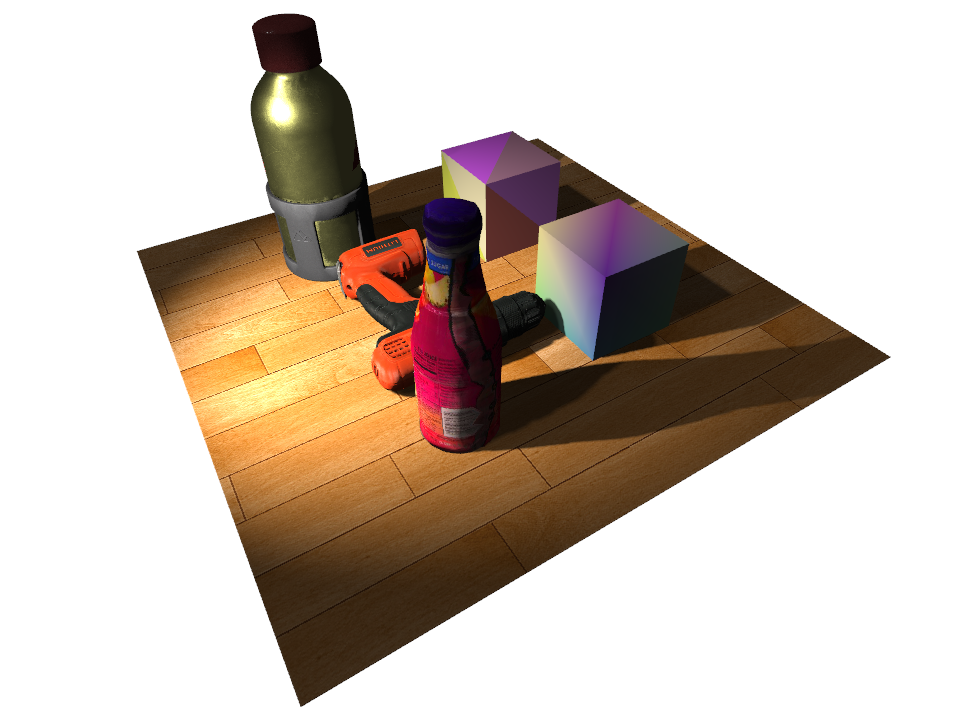Offscreen Rendering¶
Note
If you’re using a headless server, you’ll need to use either EGL (for GPU-accelerated rendering) or OSMesa (for CPU-only software rendering). If you’re using OSMesa, be sure that you’ve installed it properly. See Getting Pyrender Working with OSMesa for details.
Choosing a Backend¶
Once you have a scene set up with its geometry, cameras, and lights,
you can render it using the OffscreenRenderer. Pyrender supports
three backends for offscreen rendering:
- Pyglet, the same engine that runs the viewer. This requires an active display manager, so you can’t run it on a headless server. This is the default option.
- OSMesa, a software renderer.
- EGL, which allows for GPU-accelerated rendering without a display manager.
If you want to use OSMesa or EGL, you need to set the PYOPENGL_PLATFORM
environment variable before importing pyrender or any other OpenGL library.
You can do this at the command line:
PYOPENGL_PLATFORM=osmesa python render.py
or at the top of your Python script:
# Top of main python script
import os
os.environ['PYOPENGL_PLATFORM'] = 'egl'
The handle for EGL is egl, and the handle for OSMesa is osmesa.
Running the Renderer¶
Once you’ve set your environment variable appropriately, create your scene and
then configure the OffscreenRenderer object with a window width,
a window height, and a size for point-cloud points:
>>> r = pyrender.OffscreenRenderer(viewport_width=640,
... viewport_height=480,
... point_size=1.0)
Then, just call the OffscreenRenderer.render() function:
>>> color, depth = r.render(scene)

This will return a (w,h,3) channel floating-point color image and
a (w,h) floating-point depth image rendered from the scene’s main camera.
You can customize the rendering process by using flag options from
RenderFlags and bitwise or-ing them together. For example,
the following code renders a color image with an alpha channel
and enables shadow mapping for all directional lights:
>>> flags = RenderFlags.RGBA | RenderFlags.SHADOWS_DIRECTIONAL
>>> color, depth = r.render(scene, flags=flags)
Once you’re done with the offscreen renderer, you need to close it before you can run a different renderer or open the viewer for the same scene:
>>> r.delete()
Google CoLab Examples¶
For a minimal working example of offscreen rendering using OSMesa, see the OSMesa Google CoLab notebook.
For a minimal working example of offscreen rendering using EGL, see the EGL Google CoLab notebook.